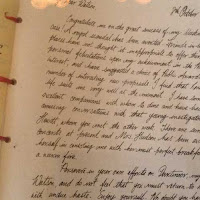The modern-day film and TV adaptations of Sir Arthur Conan Doyle's Sherlock Holmes stories bring great excitement to the minds of spectators who are familiar with the original Canons of Sherlock Holmes. The filmmakers often claim that they are reimagining the life and methods of the much-loved London-based ingenious detective and his biographer cum partner Dr. John Watson in the contemporary life scenarios. I feel that such claims are merely a way to get more viewership, as I usually find that the reconstructed characters resemble Holmes and Watson only a little, apart from the mere dramatic aspect that they bear the names Holmes and Watson. In other words, the modern-day Sherlock Holmes is just another detective with the same name, that’s how I felt. When I was watching BBC's Sherlock in which Benedict Cumberbatch and Martin Freeman enact the fictional duo, the degree of connection I could make between the original and the contemporary versions was nothing accountable.
I think that the aforementioned case is more apparent when considering another contemporary retelling of Sherlock Holmes and Watson I am watching currently. What I watch now is the series 'Elementary'(on Amazon Prime) aired originally on the American CBS channel during the same period as BBC's Sherlock. The title is a direct reference to a catchphrase Sherlock Holmes used multiple times as per the original stories. [SPOILERS AHEAD]In the 'Elementary' version, Holmes is living in New York and working with NYPD (instead of London's Scotland Yard). 'Elementary' portrays a young London detective, played by Jonnie Lee Miller, who had made good fame working with Scotland Yard, who has recently moved to New York to recover from drug addiction due to the death of his love interest 'Irene Adler'. It is true that the Canons of Sherlock Holmes (i.e., 56 Short stories and 4 Novels, written by Doyle) show Miss Irene Adler as a woman Holmes admired because of her extraordinary intelligence. Apart from that, a romantic connection towards any woman is not imaginable for a Victorian Holmes considering the picture Doyle presented to our minds. In Elementary, Irene Adler is killed by Holmes's arch-rival Moriarty (James Moriarty as per the Canon). The twist is that Adler is not killed, she was Moriarty (Jamie)herself, who was simply faking her death to distract Holmes from investigating her crimes.
Another crucial difference is that Elementary's Watson is not a male, but a female character by the name Dr. Joan Watson. Portrayed by Lucy Liu, Elementary's Dr. Joan Watson came to live in Holmes's place as a sober companion, someone who is employed by his father to speed up the recovery from drug use. They both share a platonic affection, which is something delightfully conceptualized by the show producers and remarkably done well by both the actors. In the original version, Watson is Holmes's biographer, and in the BBC's Sherlock also, the Watson character is doing a little bit of the biographical work through blogging (which is still available at http://www.johnwatsonblog.co.uk/). In Elementary, Dr. Joan shares an equal responsibility in solving crimes with Sherlock Holmes at least in some cases they investigate together, instead of becoming a simple biographer.
I think BBC's Sherlock features a closer portrayal of the original plot, although it was not a favorite of mine during the time it was aired. The only episode I really liked was the one titled 'The Abominable Bride' as this episode featured the actual period settings as per the canons. Whereas, the 'Elementary' version poses a scenario that is almost impossible to imagine as the original Holmes, although I like this version better. I think Miller's Holmes is a better enactment of a modern-day detective, who is genius and nerdy at the same time. If Sherlock Holmes lived in the present day, he will behave more like Miller's version, in comparison with Benedict Cumberbatch’s, whose was more like a magician.
In addition to these series, another modern-retelling of Sherlock Holmes I watched is the Japanese 'Miss Sherlock'. The producers of this series have quite brilliantly placed Sherlock Holmes and Watson to a different culture, and to a different time. In addition to that, they swapped the genders as well. In the Japanese version, Sherlock and Watson are both females, and they came to live together because of the necessity to share the rent of an apartment, just like the canons. The Sherlock character's name is Sara Shelly Futaba, who is nicknamed Sherlock by her friends in the police department because she offers great assistance to them in solving crimes. Her flatmate is Dr. Wato Tachibana, who is called 'Wato-san'(Watson), as 'san' is a respectful form of address in the Japanese language.
I would like to see the canons of Sherlock Holmes stories serialized in their original period settings by somebody sooner than later. Last time when it was done by UK's Grenada Television, they produced a selection of the stories featuring Jeremy Brett as Sherlock Holmes. IMHO, Jeremy Brett's portrayal is the most accurate one, although there are plenty of arguments against this view.
PS: The actress Yūko Takeuchi, who portrayed Sherlock in the Japanese Miss Sherlock series committed suicide a year ago, that’s an unfortunate postlude.





















